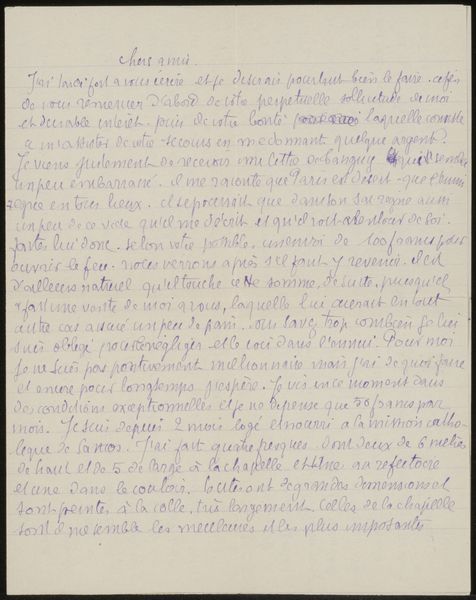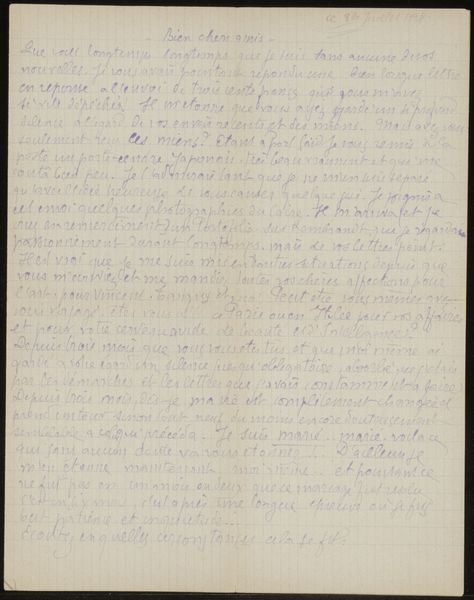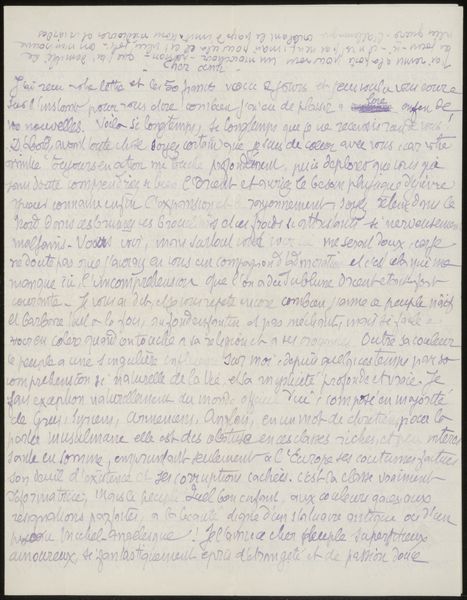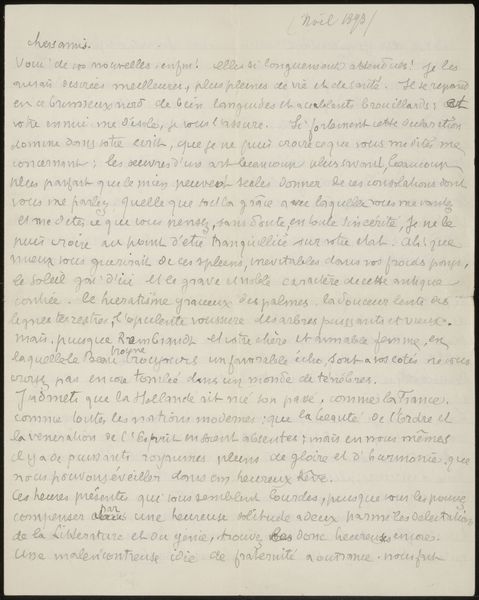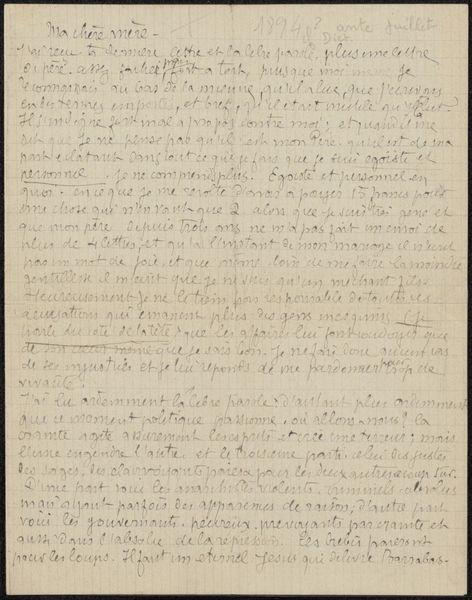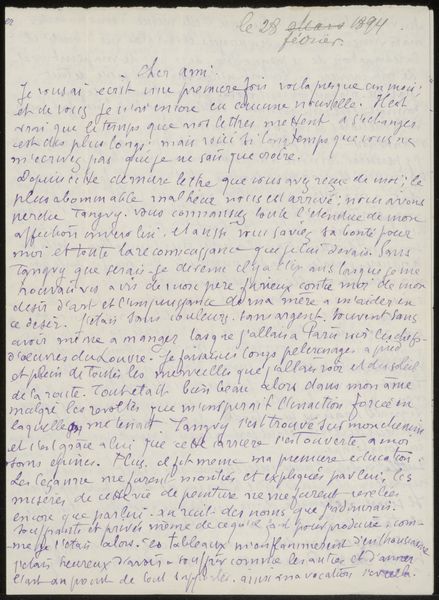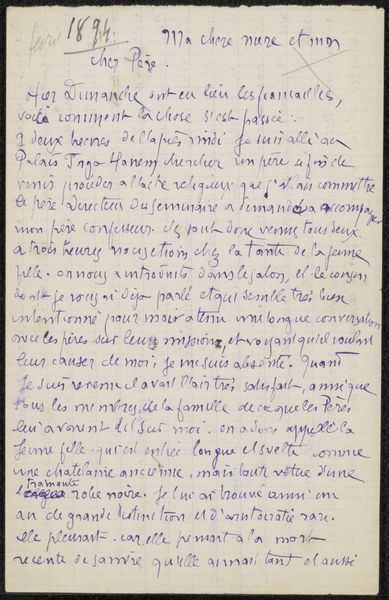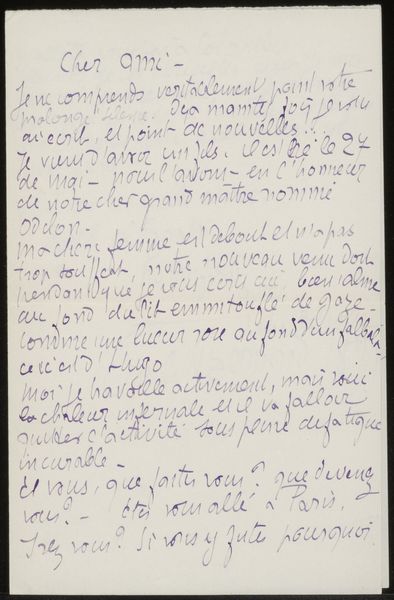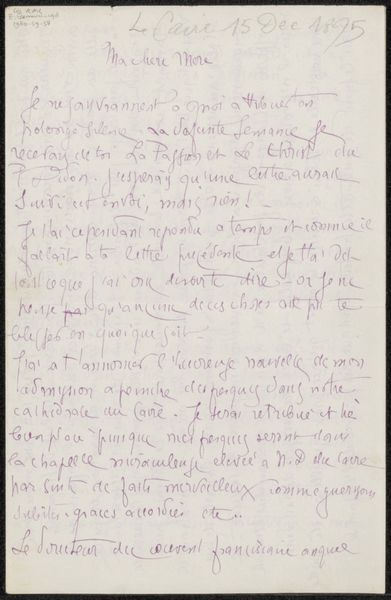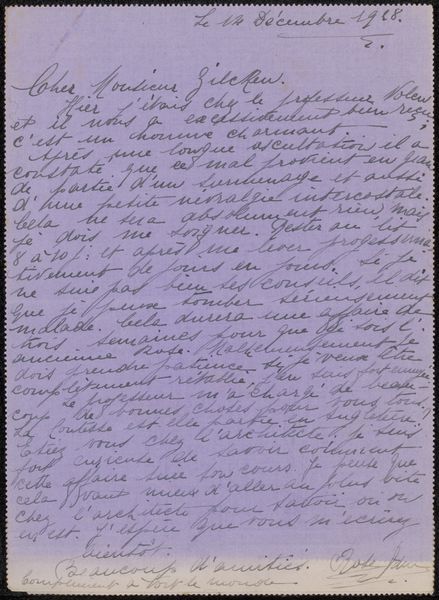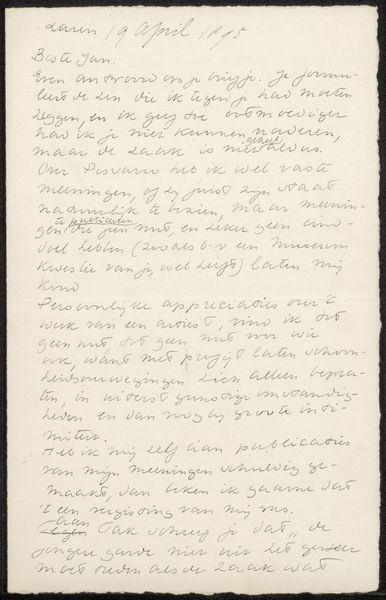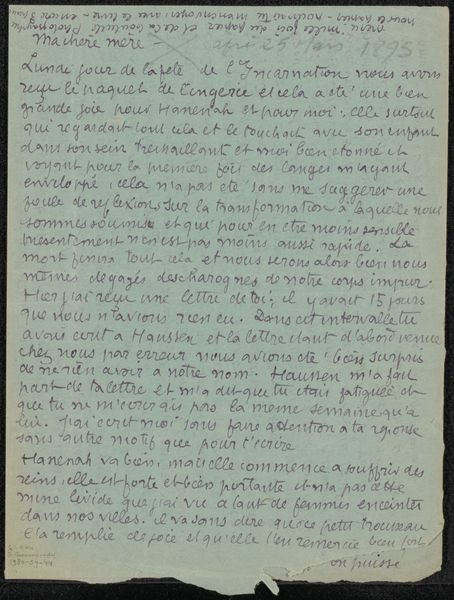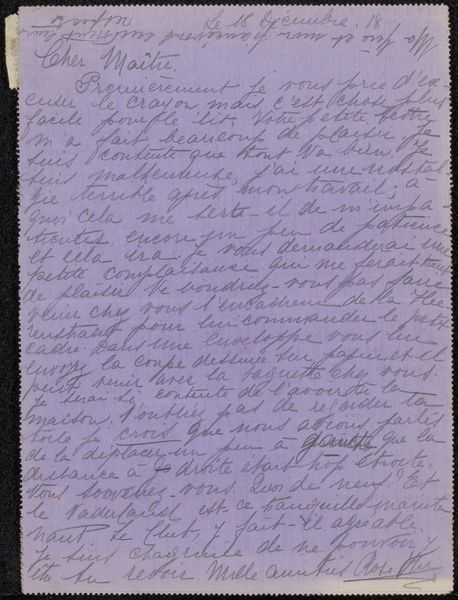
drawing, paper, ink
#
drawing
#
paper
#
ink
#
post-impressionism
#
calligraphy
Copyright: Rijks Museum: Open Domain
Editor: We're looking at "Brief aan Andries Bonger," or "Letter to Andries Bonger," created before 1896 by Emile Bernard. It’s an ink drawing on paper, mostly calligraphy. There's a raw energy to this handwritten letter; I’m struck by its immediacy. How do you see this piece? Curator: From a materialist perspective, this letter embodies a direct link between artist and audience. Forget the polished canvas; here, the support *is* the art. Bernard's labor is laid bare. We see the very tool – ink – and the ground for its application – paper, probably inexpensive. Consider the socio-economic context: corresponding via readily available, portable, and affordable means speaks volumes about artistic communities. Notice also how writing as a skill, the everyday act of sending messages, is elevated to an art form here. Editor: That's interesting! It wasn't necessarily intended as art, but becomes art through its form and the passage of time. Curator: Precisely. The post-Impressionist label applied later might be somewhat misleading. It diverts attention from the actual production and lived experience reflected. Instead, view this “letter” as social practice avant la lettre; connecting Bernard with the receiver, the means for creative support and emotional connection. Editor: I see. So it’s less about stylistic classification and more about the exchange itself, made possible by these very accessible materials? Curator: Exactly! Its value lies not in its adherence to artistic canons but in its raw materiality. Editor: I never thought about considering it this way; viewing it through the means of its creation. It really puts the focus on labor, access, and the role of the artist. Curator: It is fascinating, right? Seeing the piece as an everyday object as well.
Comments
No comments
Be the first to comment and join the conversation on the ultimate creative platform.
